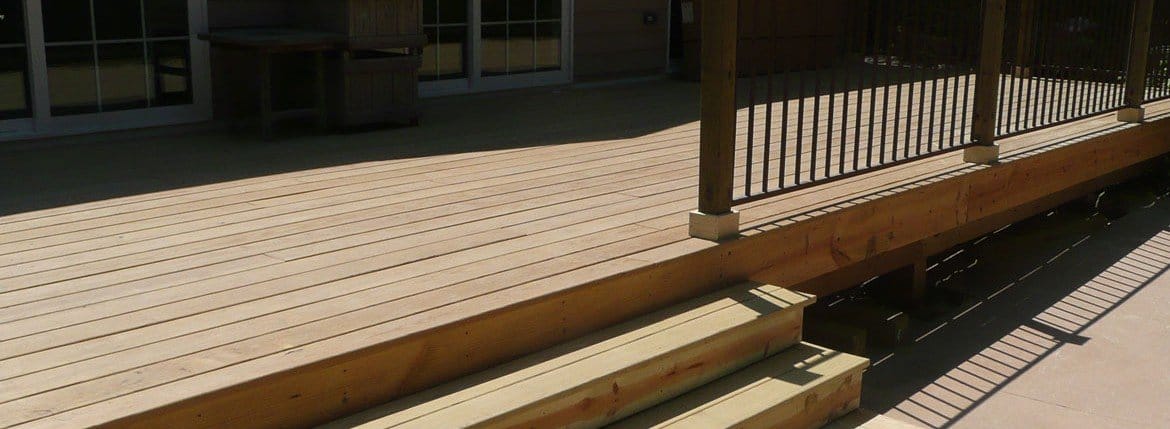Do you find that your decking becomes slippery when it rains? Do you worry about guests or your children falling over?
Decking is renowned for becoming slippery during rainy and frosty months. However, there are ways to add grip to your decking to make it safer. We’ve outlined some of the options below, all of which you can do yourself at minimal cost.
Can you get non-slip decking?
If you don’t have any decking, or you want to replace your current deck, you can buy non-slip decking that has already been treated to make it less slippery when it rains.
Non-slip decking comes with a rough surface pre-installed to provide extra grip. This rough surface is usually made of resin and aggregate to create an anti-slip surface. It may alter the look of the deck slightly, but the main benefit is you’ll have a safer space to walk on.
How to make existing decking non-slip
If you don’t want to pay for a brand new deck, there are some ways you can make your existing decking anti-slip.
Anti-slip decking stain
You can purchase an anti-slip stain that can easily be applied with paint brushes. You just need a dry day and some time, and your decking won’t be slippery any longer! Follow our steps below to apply the stain.
How to stain a deck
- Clean the decking thoroughly to get rid of any surface dirt or algae. You can do this with a stiff brush or a jet wash.
- Allow the deck to dry (a couple of hours on a mild day should be enough).
- Apply a small amount of stain to an inconspicuous area so you can see what the stain will look like.
- If you’re happy with your test area, apply the anti-slip decking stain, following the instructions on the tin.
- Clean your paint brushes or rollers thoroughly and avoid walking on the deck for 12-24 hours.
- A second coat may be required.
- Re-apply your anti-slip stain yearly or when needed.
Clean it regularly
When it rains, it isn’t the water that makes your decking slippery, but the fungus that begins to grow on the wood because of the rain. To avoid a buildup of fungus and algae, you should clean your decking regularly.
First, clear the surface of any garden furniture, pots and other garden accessories. Then sweep the deck thoroughly with a stiff brush, taking extra care in the corners where mould is most likely to grow.
Then, use an algae removing product which works by attacking the algae. The product could come as a pre-mixed solution or you may have to dilute it with water yourself, so just check which one you’ve purchased. Apply and leave for a specified time according to the instructions. You should follow the instructions carefully as you don’t want to damage the deck.
Once the product has had time to work, either brush the deck or rinse the solution away. If you choose to rinse it, make sure you spray the water towards the house so as to avoid any plants or borders.
Anti-slip inserts
You can purchase anti-slip inserts that slot into the grooves in your decking to offer additional grip. You can usually install these yourself instead of paying a professional to do it and the task can be completed within an hour.




